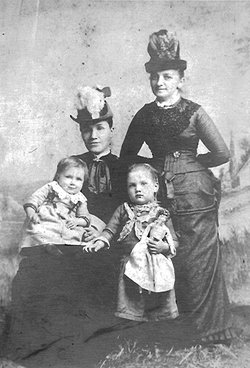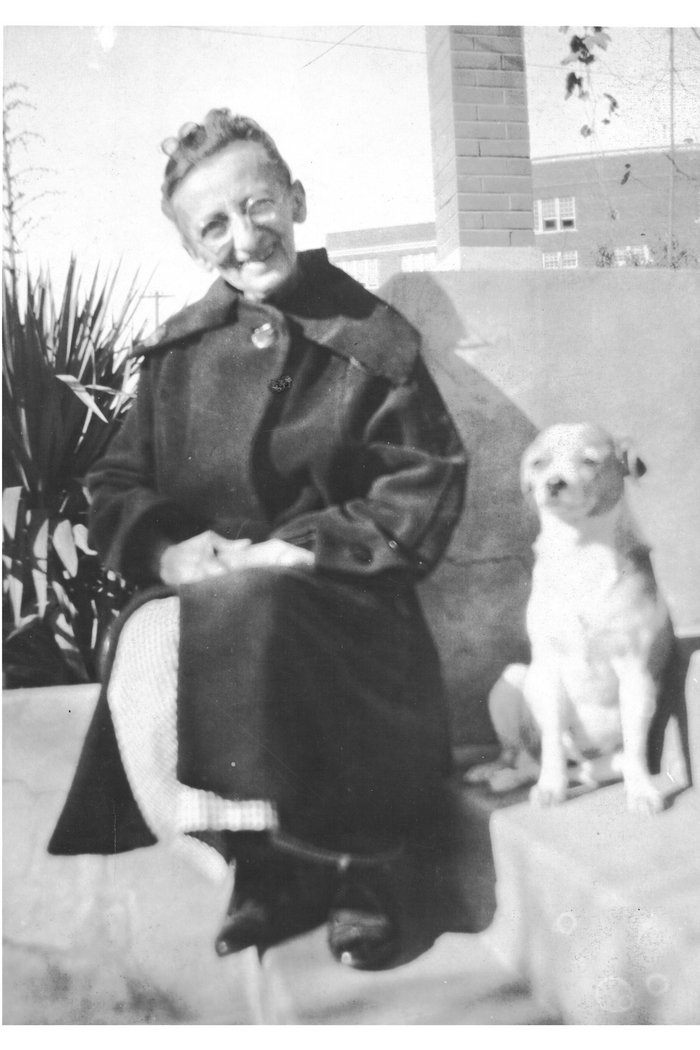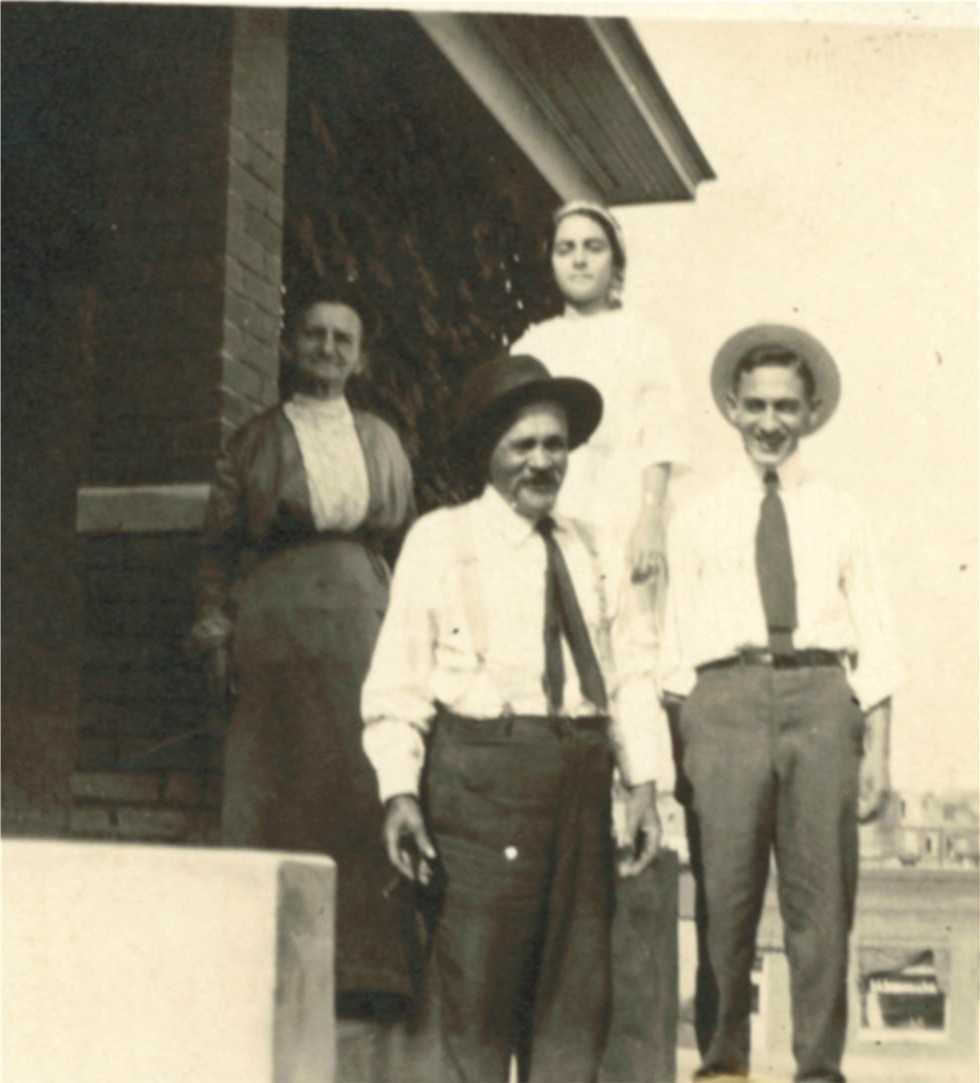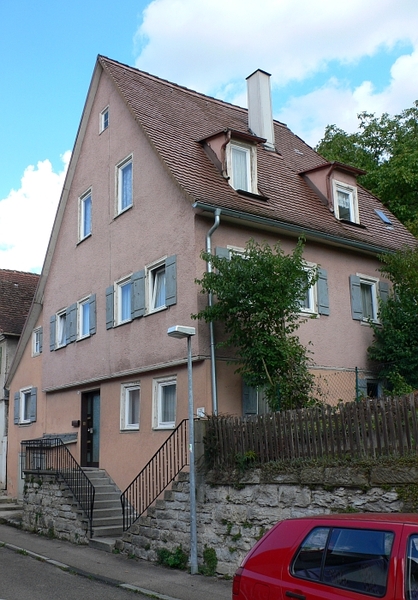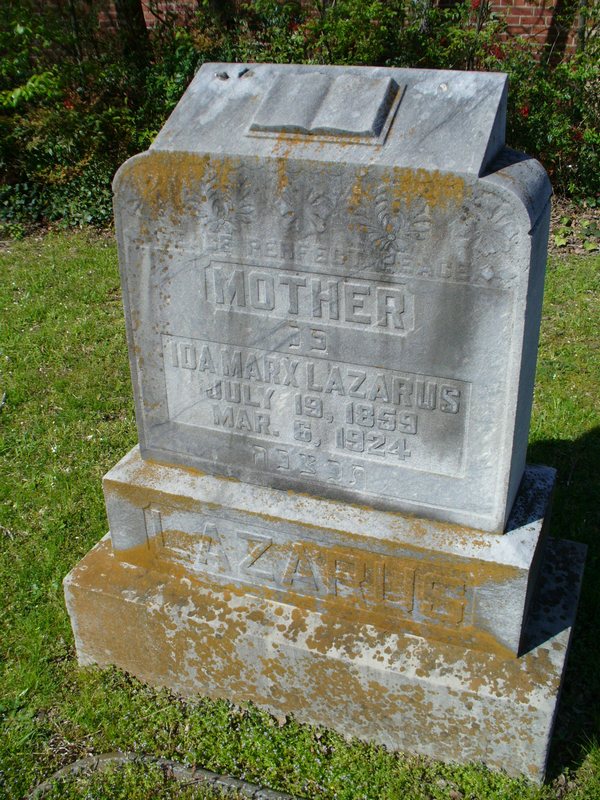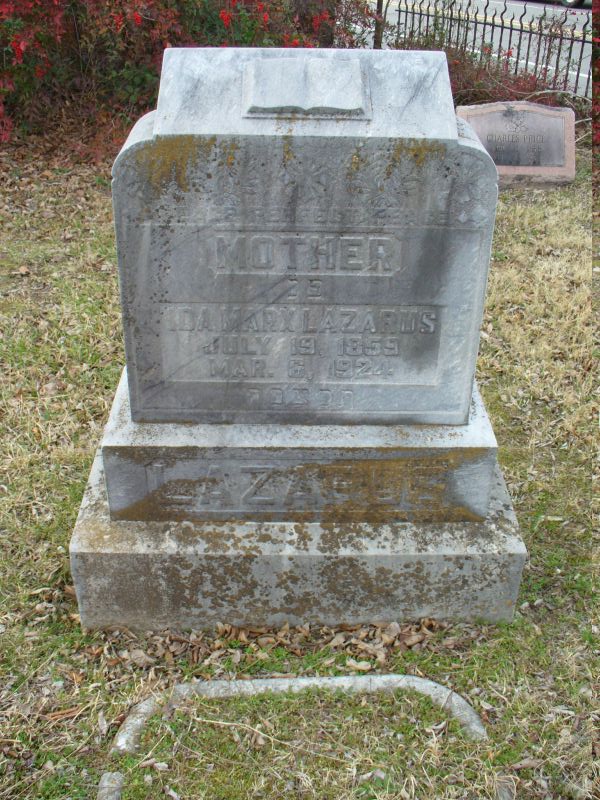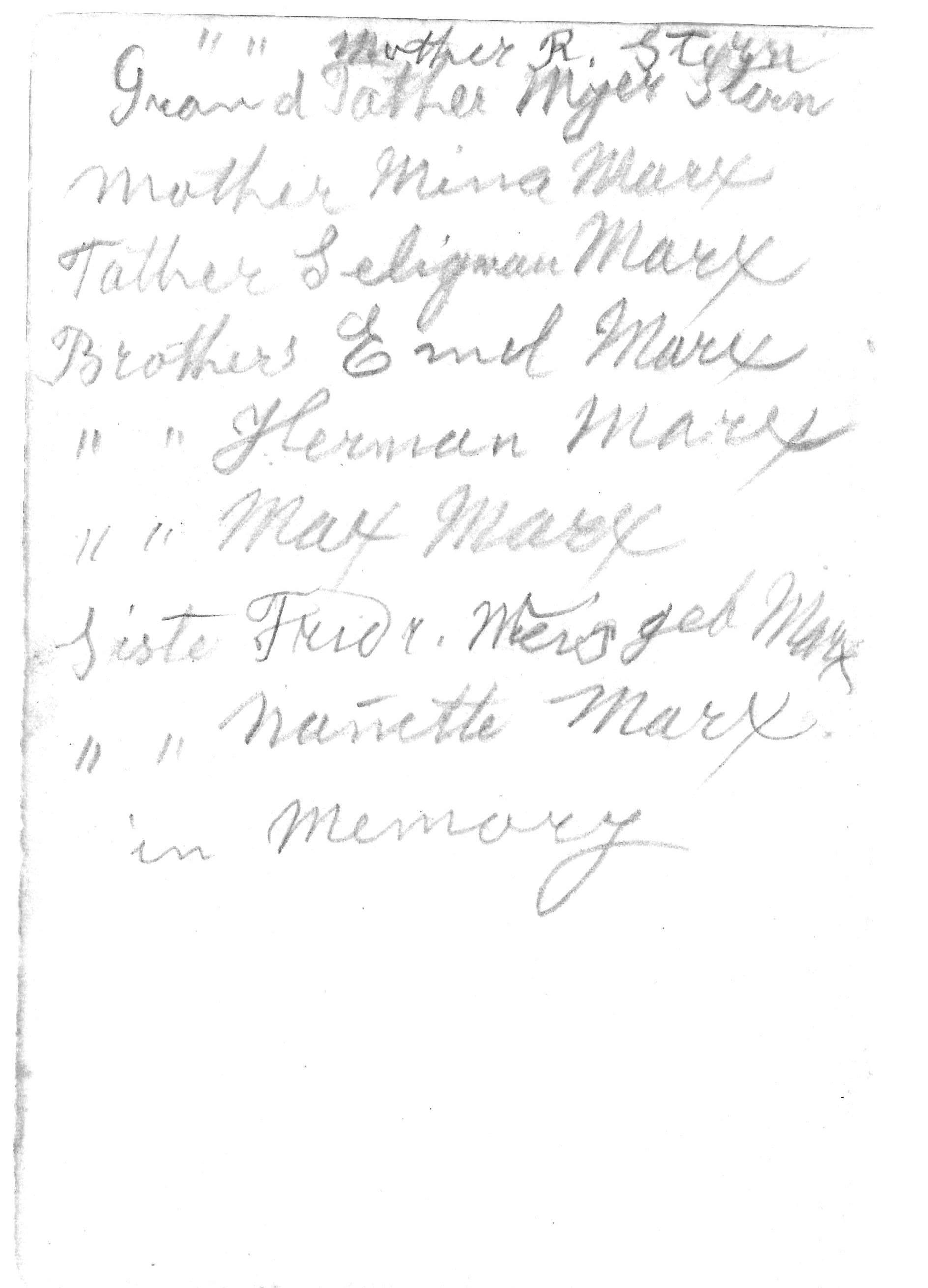Emigrated from Steinbach bei Schwaebisch Hall (also known as Hall/Steinbach or Hall), Baden-Wuerttemberg, Germany to Hot Springs, Arkansas to marry Cyrus Lazarus, a friend of her brother, Adolph (Aaron) Marx. They were married on December 28, 1890. Cyrus was born in Goldingen, Kurland (now Kuldiga, Latvia), brought as an infant to the US, and raised in Camden, Arkansas. He spent about 5 years at the Widows and Orphans Home in New Orleans.
Adolph, Ida's older brother, previously settled in Hot Springs after having lived, worked and married in New York State, and is assumed to have arranged the marriage between Ida and Cyrus. Adolph is also buried in Jewish Rest cemetery. Ida's parents, Seligmann and Mina Stern Marx, are listed in the communal death records of Muehringen, Horb/Neckar, Baden-Wuerttemberg, Germany, although they are buried in the Steinbach Jewish Cemetery, near today's Schwaebisch-Hall. A family tree from her relatives in Germany shows her birthday as 7/19/1857, two years earlier than that on her memorial stone in Hot Springs.
In the Middle Ages, Hall (now Schwäbisch Hall) included a Jewish community from the 13th to the 15th century and then another in the mid-19th century. The city's Haalstrasse was the center of a Jewish residential area in the Middle Ages. It was not until the mid-19th century that Jews were allowed to reside again in Hall. 263 Jews lived in the city in 1880. Some Jews expelled from Hall are likely to have settled in the vicinity. The district, now identified as Unterlimpurg, had Jewish residents in 1541. In the first half of the 18th century, Elieser Sussmann, a Jewish painter from Poland, decorated the congregation's prayer room. It can now be found in the Hällisch-Fränkisches Museum in Schwäbisch Hall. Another Jewish community was in the Hall neighborhood of Steinbach. Its Neustetter Strasse was formerly the "Judengasse" (Jews' Alley). Along the street that leads to Unterlimpurg, at Neustetter Strasse 34, a synagogue was built in 1809 and remained a house of worship in Hall and Steinbach until its destruction in 1938. In 1809 a Jewish cemetery was opened on Steinbacher Strasse. It was vandalized in 1938 and in the years thereafter. Only some of its gravestones have been resurrected. A prayer room in the house at Obere Herrengasse 8 was also destroyed in 1938. The rabbinical headquarters originally located in Braunsbach was moved to Hall around 1900 and located in the building at Obere Herrengasse 1.
Emigrated from Steinbach bei Schwaebisch Hall (also known as Hall/Steinbach or Hall), Baden-Wuerttemberg, Germany to Hot Springs, Arkansas to marry Cyrus Lazarus, a friend of her brother, Adolph (Aaron) Marx. They were married on December 28, 1890. Cyrus was born in Goldingen, Kurland (now Kuldiga, Latvia), brought as an infant to the US, and raised in Camden, Arkansas. He spent about 5 years at the Widows and Orphans Home in New Orleans.
Adolph, Ida's older brother, previously settled in Hot Springs after having lived, worked and married in New York State, and is assumed to have arranged the marriage between Ida and Cyrus. Adolph is also buried in Jewish Rest cemetery. Ida's parents, Seligmann and Mina Stern Marx, are listed in the communal death records of Muehringen, Horb/Neckar, Baden-Wuerttemberg, Germany, although they are buried in the Steinbach Jewish Cemetery, near today's Schwaebisch-Hall. A family tree from her relatives in Germany shows her birthday as 7/19/1857, two years earlier than that on her memorial stone in Hot Springs.
In the Middle Ages, Hall (now Schwäbisch Hall) included a Jewish community from the 13th to the 15th century and then another in the mid-19th century. The city's Haalstrasse was the center of a Jewish residential area in the Middle Ages. It was not until the mid-19th century that Jews were allowed to reside again in Hall. 263 Jews lived in the city in 1880. Some Jews expelled from Hall are likely to have settled in the vicinity. The district, now identified as Unterlimpurg, had Jewish residents in 1541. In the first half of the 18th century, Elieser Sussmann, a Jewish painter from Poland, decorated the congregation's prayer room. It can now be found in the Hällisch-Fränkisches Museum in Schwäbisch Hall. Another Jewish community was in the Hall neighborhood of Steinbach. Its Neustetter Strasse was formerly the "Judengasse" (Jews' Alley). Along the street that leads to Unterlimpurg, at Neustetter Strasse 34, a synagogue was built in 1809 and remained a house of worship in Hall and Steinbach until its destruction in 1938. In 1809 a Jewish cemetery was opened on Steinbacher Strasse. It was vandalized in 1938 and in the years thereafter. Only some of its gravestones have been resurrected. A prayer room in the house at Obere Herrengasse 8 was also destroyed in 1938. The rabbinical headquarters originally located in Braunsbach was moved to Hall around 1900 and located in the building at Obere Herrengasse 1.
